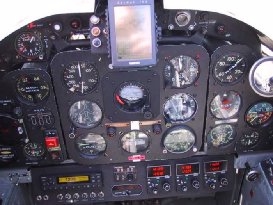|
|
|
 |
Our L-29 Delfin |  |
|
"MAINTENANCE" is a must for continued Airworthiness |
||||
 Note the hydraulic mule for powering the hydraulics. It beats trying to service the gear with that loud jet whistle in the hangar-:>) |
Zweigle Aviation Hangar The maintenance on the Delfin to this point has been very straight forward. The current manuals that I have were translated to English. While helpful they do leave a few gaps in procedure. In the picture the gear is fully retracted. The gear is manufactured from what appears to be cast iron, and the hydraulics look similar to something on a 580 Case Backhoe! very stout! Flap mechanisms, push pull control tubes, and misc. castings all exhibit superior craftsmanship. The brakes on this aircraft are pneumatically operated drum brakes. That's right, no fluid of any kind and certainly no disks. I have to say, at first the idea of drum brakes did not excite me. However, keep this in mind, most all commercial trucks sharing the highways today still utilize pneumatically operated drum brakes. The reason for this is that the drum brake combination offers a tremendous amount of stopping power. While the drum brakes of the L-29 are a bit more advanced, the physics remain the same. |
|||
|
Zweigle Aviation Hangar cont. e-mail |
 This Bird Is IFR Certified IFR equipped with Collins Coms, Nav, GS and Markers. King DME. Two place voice actuated intercom. New Garmin Digital Transponder/Enc. and GPS. |
|||
 Navy HGU 68P Helmet and MGU 14P Oxygen Mask Our L-29 has also been modified to accept U.S. Personal equipment such as this oxygen mask and communications. |
||||